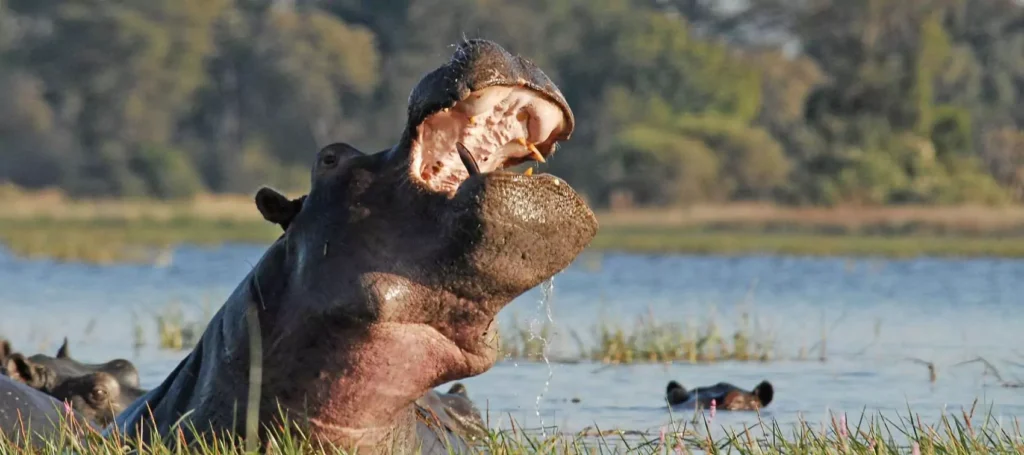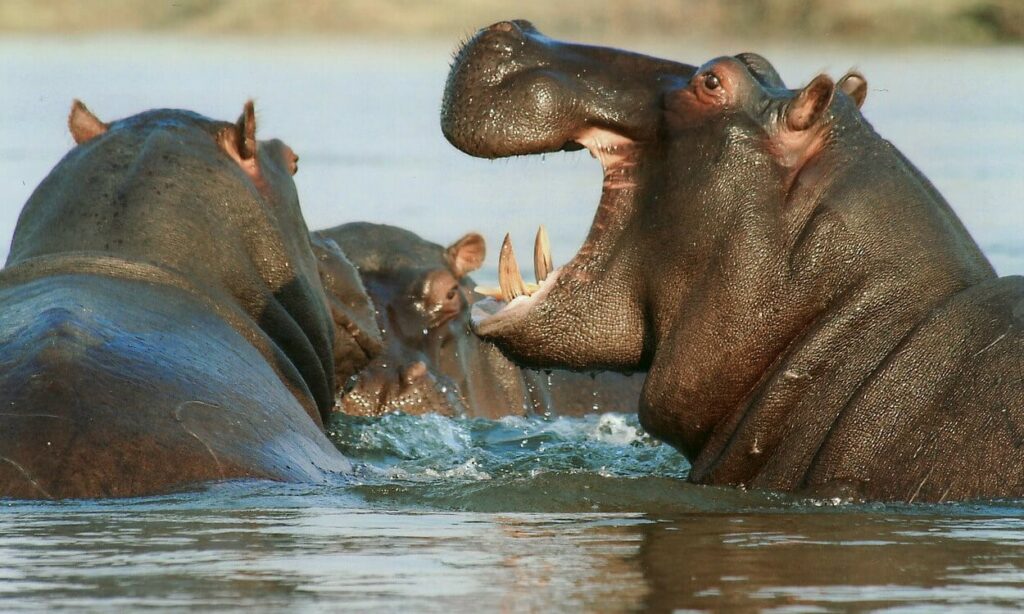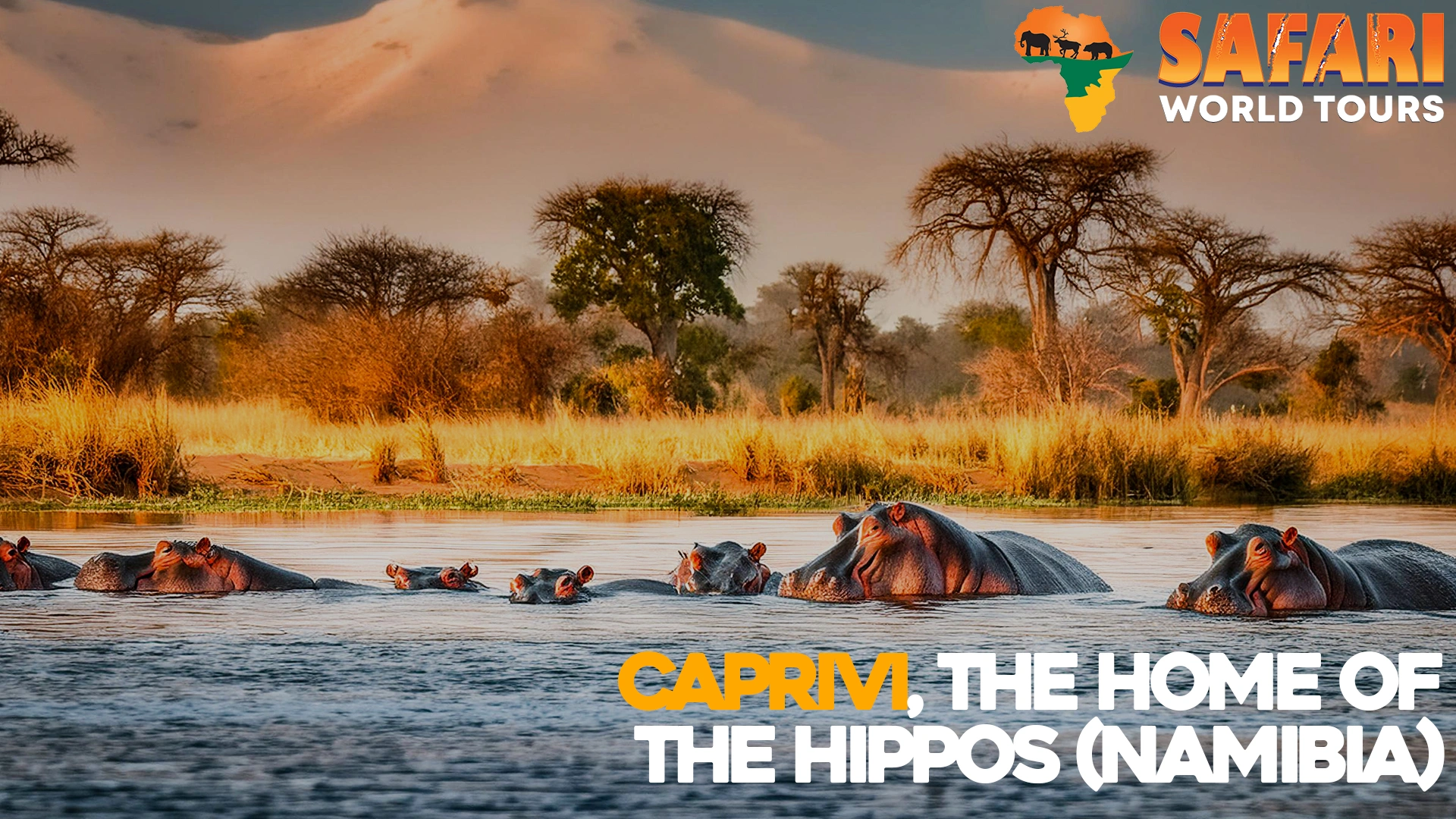Many parts of Namibia in 2024 may be known for other wildlife, but Caprivi boasts of a vast majority of hippopotami. This amphibious creature is a major attraction to millions of wildlife lovers. The area only recently changed its name to Zambezi Region in 2013 but is commonly referred to as Caprivi among the locals. It shares borders with Zambia, Botswana, and the Angola Caprivi Strip.
There are three parks in Caprivi: Bwabwata National Park, Mudumu National Park, and Nkasa Rupara. Rich with abundant wildlife, the park will find hippos, wild dogs, roans, antelope buffalo, and crocodiles. As you take a ride through the Zambezi River, it is easier to spot these hippos in their numbers on and beneath the water.

The hippopotamus is an awesome creature, and fortunately, Caprivi is one of the places in Namibia where immense effort has been put toward the conservation of wildlife.
This is a success considering the huge and negative impact of poaching in the area. More interestingly, it is recorded that birds of several species have been found to a height of 70%, which is a good achievement. With this, Caprivi is projected to someday surpass Etosha Park in the concentration of wildlife in the future.
However, lots of these hippos were lost due to widespread anthrax, a disease that affects the skin and lungs. However, immediate efforts are put in place to curb the widespread of the disease. Luckily, the population of hippos continues to grow.
WHAT MAKES HIPPOS EXCEPTIONAL
A significant characteristic of the hippo is its deep grunting. However, they are very dangerous and unpredictable. This immensely large animal is one of the biggest land mammals, and its massive weight is estimated to be about 3 tons.
Its thick skin weighs over a ton. The animal is capable of capsizing a canoe and even attacking humans with its massive teeth. The Okavango Delta is reputed to have a very high concentration of hippos. They are usually out of water in the evenings when it is time to feed. The Caprivi has been described as a paradise for lovers of the hippopotamus.
The hippo is a semi-aquatic animal and is commonly found in rivers, swamps, and floodplains. Hippos do not actually swim but walk in the water. However, spend most of their time in water and occasionally come out to sun them.
During the dry seasons, the water level drops, thereby causing the hippos to move to areas with more water, and when the water level rises again. There is usually territorial dispute between hippos as the males struggle for territories, especially during the dry seasons when they migrate to places with more water.
The hippo is capable of attacking humans and has been said to kill more humans compared to lions, tigers, and other wild creatures. Visitors and tourists are expected to maintain extreme caution and care when around the hippo. Coming to the sight of this wonderful wildlife can be the fun experience of a lifetime.
CONSERVATION EFFORTS RELATED TO CAPRIVI STRIP IN 2024

One of the most significant conservation efforts in the Caprivi Strip is the establishment of protected areas such as the Bwabwata National Park and the Mudumu National Park.
These areas provide a haven for wildlife, including hippos, and help to prevent habitat loss and fragmentation.
Local communities have also been involved in conservation efforts through community-based conservation programs.
These programs provide incentives for communities to protect wildlife and their habitats by providing alternative livelihoods, such as ecotourism ventures and sustainable agriculture practices.

Conservation organizations such as the World Wildlife Fund and the Namibian Nature Foundation have played a significant role in conservation efforts in the Caprivi Strip.
These organizations have worked with local communities and government agencies to develop sustainable management plans, conduct research on wildlife populations, and promote conservation awareness.
However, challenges remain in the conservation of Caprivi Strip’s ecosystem. Climate change, habitat loss, and human-wildlife conflict continue to threaten the survival of hippos and other wildlife species in the area.
Efforts to protect the area must continue, with a focus on addressing these challenges and creating sustainable solutions that benefit both wildlife and local communities.
FAQs
Q: What is Caprivi Strip?
A: Caprivi Strip is a narrow panhandle-shaped territory located in northeastern Namibia, bordered by Angola, Botswana, Zambia, and Zimbabwe.
Q: Why are hippos important in Caprivi Strip?
A: Hippos are an important species in the Caprivi Strip because they play a critical role in maintaining the area’s ecosystem. They help to control vegetation growth, create habitats for other species, and provide food for predators such as lions and crocodiles.
Q: How many hippos are there in the Caprivi Strip?
A: The exact number of hippos in the Caprivi Strip is unknown, but it is estimated that there are several thousand individuals living in the region.
Q: What are the threats to hippo populations in the Caprivi Strip?
A: The biggest threats to hippo populations in the Caprivi Strip include habitat loss and fragmentation, poaching for their meat and ivory, and human-wildlife conflict.
Q: What conservation efforts are being made to protect hippo populations in the Caprivi Strip?
A: Conservation efforts in the Caprivi Strip include the establishment of protected areas such as Bwabwata and Mudumu National Parks, community-based conservation programs, and research to better understand hippo behavior and ecology.
Q: Can I see hippos in the Caprivi Strip?
A: Yes, visitors to the Caprivi Strip can see hippos in their natural habitat on guided safaris or river cruises.
Q: Are hippos dangerous to humans?
A: Yes, hippos are considered one of the most dangerous animals in Africa and can be aggressive toward humans if they feel threatened or provoked. It is important to view them from a safe distance and with the guidance of an experienced guide.


